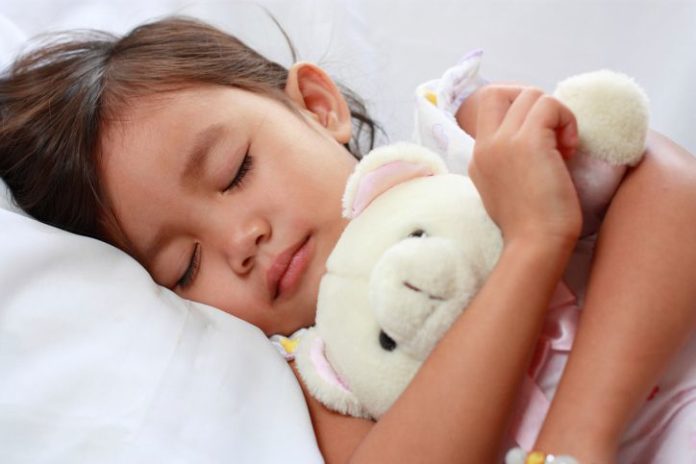Sleep researchers at the University of Massachusetts Amherst today offer the first research results showing that classroom naps support learning in preschool children by enhancing memory. Children who napped performed significantly better on a visual-spatial task in the afternoon after a nap and the next day than those who did not nap.
Research psychologist Rebecca Spencer, with students Kasey Duclos and Laura Kurdziel, say their results suggest naps are critical for memory consolidation and early learning, based on their study of more than 40 preschool children. “Essentially we are the first to report evidence that naps are important for preschool children,” Spencer says. “Our study shows that naps help the kids better remember what they are learning in preschool.” Results appear in the current issue of Proceedings of the National Academy of Sciences.
With an increase in publicly funded preschools, parents and administrators have questioned the usefulness of naps. “There is increased public funding for preschools and increased enrollments in preschools due to a surge of research showing the long-term health and educational benefits of early education. But there was no research on napping so they were a target for elimination in order to make more time for more learning. We offer scientific evidence that the midday naps for preschoolers support the academic goals of early education.”
For this study, Spencer and colleagues recruited 40 children from six preschools across western Massachusetts. The researchers taught children a visual-spatial task similar to the game “Memory” in the mornings. In this game, children see a grid of pictures and have to remember where different pictures are located. Each child participated in two conditions.
In one condition, the children were encouraged to nap during their regular classroom nap opportunity. Naps lasted an average of 77 minutes as recorded by observers in the classroom. In the second condition, children were kept awake for the same amount of time. Memory for the game was tested after the nap and wake conditions and again the following day to see whether nighttime sleep affected performance.
Children forgot significantly more item locations on the memory test when they had not taken a nap (65% accuracy), compared to when they did nap (75% accuracy). Thus following a nap, children recalled 10% more of the test locations than when they had been kept awake.
“While the children performed about the same immediately after learning in both the nap and wake conditions, the children performed significantly better when they napped both in the afternoon and the next day,” the authors summarize. “That means that when they miss a nap, the child cannot recover this benefit of sleep with their overnight sleep. It seems that there is an additional benefit of having the sleep occur in close proximity to the learning.”
To explore the effect of sleep stages and whether memories were actively processed during the nap, the researchers recruited an additional 14 preschoolers who came to a sleep lab and had polysomnography, a record of biophysiological changes, during their average 73-minute naps. Here Spencer and colleagues noted a correlation between sleep spindle density, that is activity associated with integrating new information, and the memory benefit of sleep during the nap.
“Until now, there was nothing to support teachers who feel that naps can really help young children. There had been no concrete science behind that,” the neuroscientist says. “We hope these results will be by policy makers and center directors to make educated decisions regarding the nap opportunities in the classrooms. Children should not only be given the opportunity, they should be encouraged to sleep by creating an environment which supports sleep.”
The authors call for preschools to develop napping guidelines and further research on how to protect and promote naptime for young children to enhance their learning.
(Source: University of Massachusetts – Amherst, Proceedings of the National Academy of Sciences)










